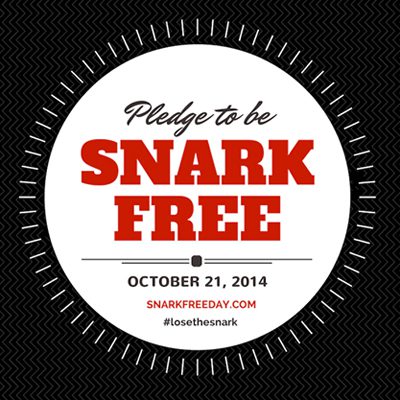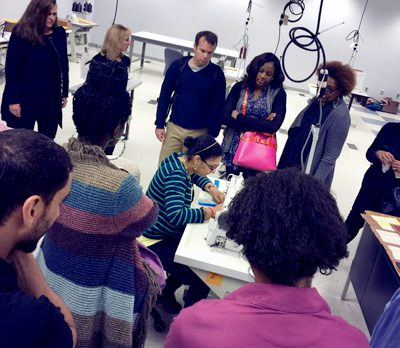Sales – The Boy Scouts Were Right
“Be Prepared.” That’s the Boy Scout motto. So many sales are lost not because the customer doesn’t want to buy, but because the salesperson isn’t prepared to sell. Here are key steps in the sales process that define what it takes to make it happen.
From Textile Design to Auto Seating, This Color Expert is a Consumer Visionary
The worst thing you could do to Sherry Sabbagh would be to put her in a colorless room or office. That’s because color – and how it affects people and their environment – goes...
Fifth Third Bank Eastern Michigan Brings Headquarters, Investment Downtown
Fifth Third Bank Eastern Michigan will relocate its headquarters to One Woodward Avenue, a historically significant structure within the downtown Detroit corridor. The move brings 150 workers and major investment to the city's core.
Shopping Experts Predict a Merry Holiday Retail Season
Optimism is the big news coming out of this year’s holiday-spending predictions, and businesses of all stripes are likely to benefit from this wave of consumer confidence, shopping experts predict.
Additionally, “Free Shipping Days,” much...
Better Life Bags Builds on a Foundation of Fashion, Giving Back and Sustainability
Rebecca Smith is what she describes as a “creative entrepreneur.” She started by creating cute bags. Then she created a business to sell the cute bags. Then came the most creative move of all....
Hiring ‘Experienced’ Workers Pays Off, Business Owner Says
At this point in his career, Curt MacRae is happy to have veteran business partners instead of employees. It’s a distinction that MacRae takes very seriously.
That’s because the people he works with at Curtis...
A Toast to the Roast: Becharas Brothers Coffee marks 100 years of nurturing java...
Becharas Brothers Coffee Co., a third-generation passion that once supplied the brew to the U.S. military, blends tradition, modern manufacturing methods and a steadfast adherence to doing what's right for the customer to generate healthy returns a century after it was founded.
Do You Really Know Where Your Disposed Data Winds Up?
Sensitive corporate, financial and personal information is stored on hard drives and electronic equipment. As businesses and consumers go through tech devices faster than ever, it is vital to protect your records--and your brand--by thinking before discarding that old computer.
How to Make a Mega-Risk Decision
Business owners and managers too often let opportunity slip through their fingers because they don’t have a strategy to handle big-risk decisions. This simple formula can help your company fearlessly leap forward in consistent growth and profitability.
‘Elf on the Shelf’ Creator Writes the Book on Entrepreneurial Tenacity
Starting a business and watching it grow is one of life’s more satisfying accomplishments. Starting a business and seeing it take off to become a worldwide family tradition? That’s the stuff of dreams.
That’s what...
PR Groups Ask for Civility and Respect on Annual “Snark-Free Day”
Ever had a co-worker roll their eyes at you? Perhaps you’ve even been guilty of adding a semi-insulting comment during a meeting or water-cooler conversation? If so, you’re just one of many employees of...
Detroit Dirt and Pashon Murray are Top Winners in ‘American Made’ Contest
A hearty “Congratulations” goes out to Pashon Murray, Michigan’s big winner from Martha Stewart’s “American Made” awards program.
Murray, founder of Detroit Dirt, got the big win in the food category. More than a dozen...
Michigan has the Chops to be a Fashion Center, FashionSpeak Experts Say
“The road to success starts in your hometown.”
Those are the words of Detroit native and world-renown fashion designer Tracy Reese, who wowed the crowd at Thursday’s FashionSpeak event at One Woodward in Detroit. The...
Cider Mill History is Rich and Ripe at Robinette’s
It’s fall in Michigan, and that can only mean one thing. It’s time to visit an apple orchard. And there are many, many reasons to do so besides the apples.
If you’re looking for a...
If You Aren’t Nurturing Growth, You’re Failing Your Employees
Empower your employees with honest communication and clearly defined goals, and you’ll see just how hungry they can be for a bigger role in your company’s success.
Throughout my career, I’ve always chosen to be...
Who’s Keeping Score on ACA Coverage Penalties?
How will the IRS find out if an employer is liable for a shared responsibility payment? How will the IRS determine if individuals are disqualified from exchange subsidies because of an offer of employer coverage? The simple answer: Employers will tell the IRS.
Spotlight Jitters? It Takes Prep and Practice to be Camera Ready
Like most people, Danielle and Andy Mayoras were nervous the first time they were on television. Now, they never break a sweat – even when they get last-minute requests from big-shot shows like “Entertainment...
Web Designer Cooks Up ‘Best Recipes’ Mag to Boost Inner Chef
Drew Maresco knows how to build a website, putting together the right programming and components to create something interesting and compelling.
The Warren native also knows how to build a recipe, putting together the right...
Industrial Sewing Program Crafts Pattern for Partnerships, Jobs
There are events that educate. There are events that celebrate. And then there are events that create jobs and have the potential to change the state of business in the state of Michigan.
That is...
Looking for Some Outdoor Fun? Try a Ride with Detroit River Sports
If you’re looking for something new to try, Michigan businesses are coming up with plenty of great ideas that take advantage of both the state’s great assets as well as our interest in adventure....




















